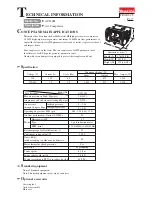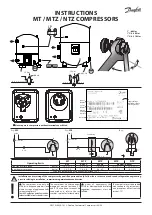
12 • BX-8x7
© Box 73 Amateurfunkservice GmbH 2014
■
Operating Instructions
The AF dynamic compressor DYC-8x7 is
looped into the microphone lead of the ori-
ginal Yaesu MH-31A8J microphone. It is
not suited for use with the optional DTMF
microphone.
To connect to the transceiver, one of the
two plugs on the supplied short cable must
be inserted into the dynamic compressor’s
TRX socket. The other plug must be in-
serted into the transceiver’s microphone
jack. The plug on the microphone cable is
then inserted into the MIC port on the
compressor. When the transceiver is tur-
ned on, the DYC-8x7 is ready for use. The
position of slide switch S1determines
whether the microphone signal is com-
pressed (ON) or not (OFF).
The compression ratio can be adjusted to
individual requirements by varying the re-
sulting resistance between Pin 6 on the
IC1 and levels in the range of 47 kΩ to 147
kΩ. The result is that the compression ra-
tio’s adjustment range runs from 4:1 to
9:1, which is sufficient for all cases.
Especially at low SSB signal received
strength, dynamic compression has a posi-
tive effect on speech intelligibility. Distant
stations will notice a signal strength in-
crease of about 1 S-unit (6 dB), and the in-
crease in loudness may be even higher.
The dynamic compressor should not be
turned on for FM, as there are no resulting
benefits. On the contrary, the signal quali-
ty will be degraded on the receiving end.
The same applies to SSB paths with good
audibility. The compressor comes into its
own with signals at the limit of audibility.
It should not be turned on in any other ca-
se.
When using 100W transceivers, it is parti-
cularly important to note that any shortco-
mings in the station setup cannot be com-
pensated for with the use of the dynamic
compressor. This mainly concerns poorly
engineered antennas without adequate RF
ground and EMC issues such as RF feed-
back via the microphone cable, which can
cause problems especially when used with
a linear amplifier.


































